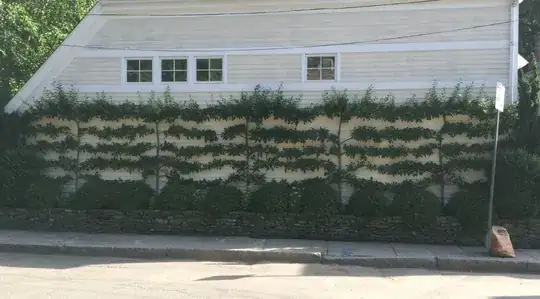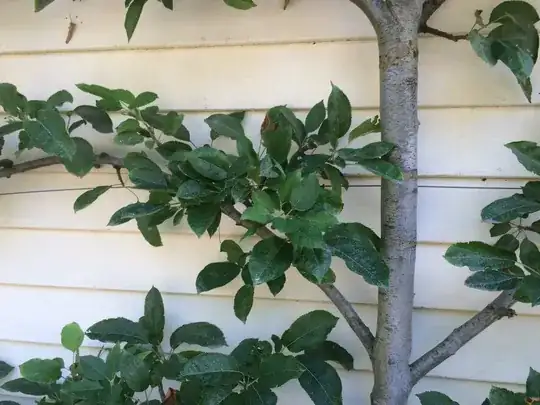I have a simple, old, rusted chainlink fence at the back of my yard. In the future, we want to replace it. Therefore, we have been looking for ideas. We recently spotted a very interesting fence-like setup in our neighborhood, which uses trees trained along cables (see pictures). It will be a couple years before we do this project, but I would like to do some more research on this idea now. My first inclination is that trees would be a bad choice, ultimately, because they will get too big. Therefore, what would be an ideal plant choice? Maybe a vine? For your information, there is plenty of space on both sides of the fence we want to replace, unlike in the pictures below.
If possible, I would like:
Good foliage all year long (evergreen - zone 6b, Boston), to provide privacy.
Relatively fast growing
Relatively long lived
Friendly to birds (optional)
Flowering (optional)
Any ideas or suggestions would be appreciated.


UPDATE:
After the helpful answer below, I've been able to find many examples of what I'm considering. For those who may be interested, I've found using the general term espalier to helpful when searching. The Belgian fence style is particularly relevant. As to the subject of selecting an ideal plant, I think I can narrow down some of the option.
Most important to me:
Good thick foliage for a good portion of the year
Winter hardiness
Moderate to low water requirements
What I do not want:
No edible fruit bearing plants
No thorny plants
Off the top of my head, I wonder if a holly might be a good choice. I welcome any suggestions for me to explore.